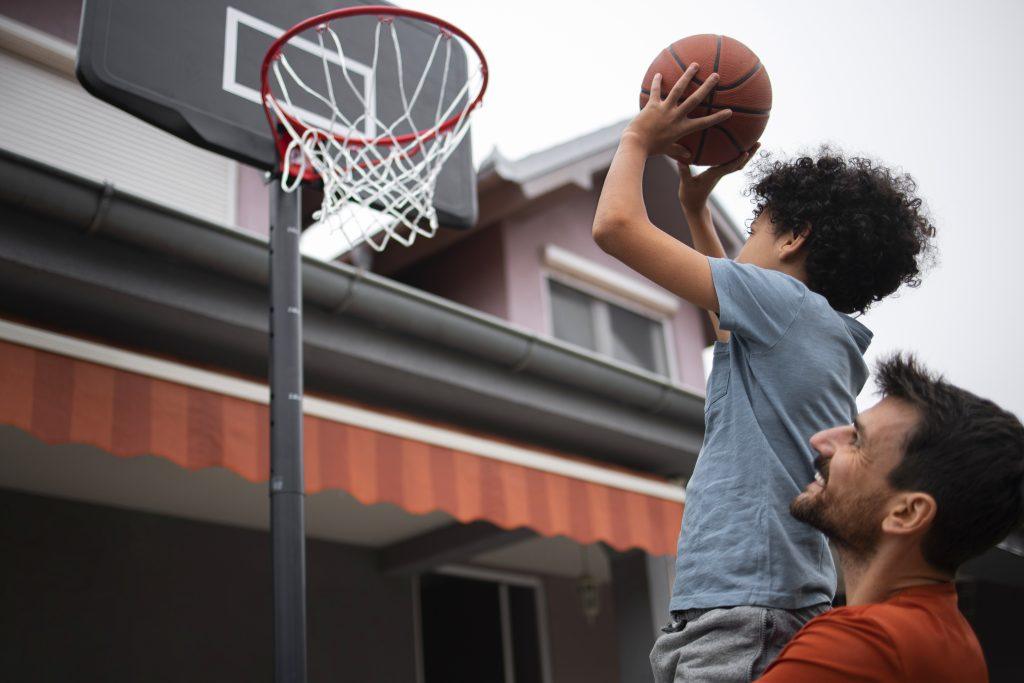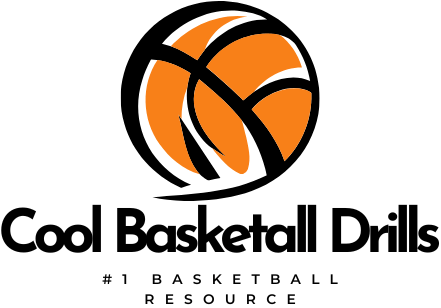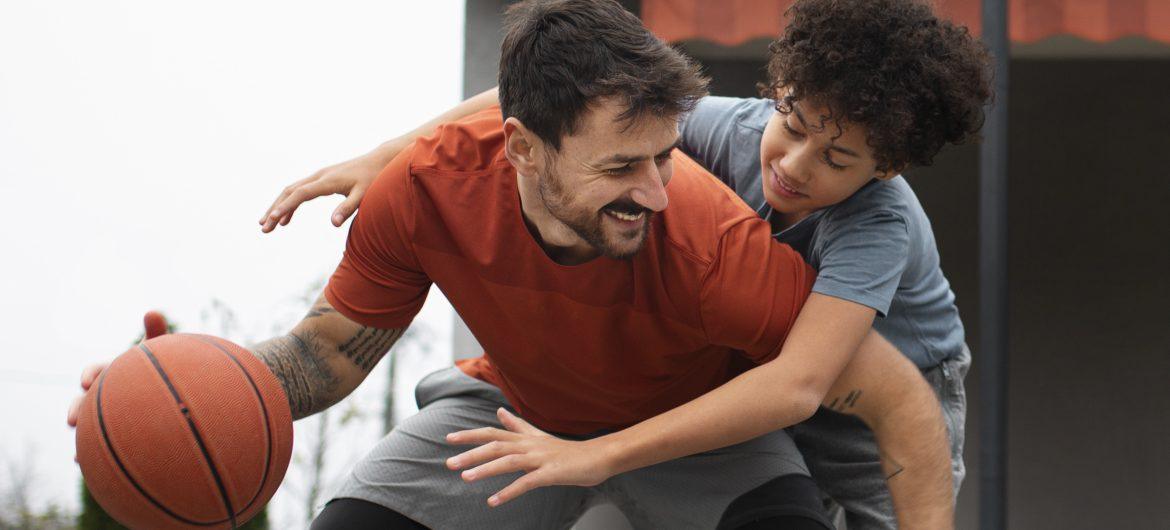When it comes to improving your basketball skills, your progress does not have to be confined to the court. Regularly practicing some at-home basketball drills can be extremely effective.
They can improve your gameplay and build your skill set, ensuring you stay at the top of your game. In this article, you’ll be guided to transforming your home into an awesome training ground.
A great way to build up a strong foundation for beginners is by practicing drills such as the “Barber Pole” or “Figure Eights”.
They require basic setups and minimal space, making them great at-home basketball drills. You can visit Breakthrough Basketball to learn more about some of these drills that will help build a solid foundation.
These basic drills are the building blocks of a well-rounded basketball skill set. As you practice these at-home exercises, you can naturally include them into a more comprehensive training regimen. Each movement will greatly improve your game-time readiness.
At-Home Dribbling Drills
Advanced dribbling drills form the core of any intensive at-home practice routine. Dribbling isn’t just about control; it’s about speed, agility, and precision.
While executing these drills, consider using resistance bands or wrist weights for added intensity. These tools increase the difficulty and effectiveness of your workout, keeping your progress ahead of the competition.
1. Spider Dribble
- Sit in a low squat position and dribble the ball between your legs.
- Alternate hands quickly, tapping the ball with your fingertips (right hand in front, left hand behind).
2. Crossover Drills
- Dribble the ball from your right hand to your left hand in a crossover motion.
- Perform the crossovers quickly while keeping the ball low.
3. At-Home Dribbling Follow Along Drills
- By following along to videos such as these daily, you will greatly improve your dribbling skills. There are many free dribbling practice follow along videos available on sites such as YouTube which can greatly help you to improve this aspect of your basketball game.
At-Home Shooting Drills Without a Hoop
Mastering shooting skills at home without a traditional hoop requires creativity and adaptability. You can maintain and even improve your shooting precision through form shooting practices and visualization techniques. The absence of a hoop is not a barrier—it encourages honing form and consistency.
4. On The Floor Shooting Drill
- Lie down on a flat surface and shoot the basketball into the air with proper technique, focus on correct form, catch the basketball and repeat. This is a great drill that will help strengthen the upper body muscles used when shooting.
5. Wall Shooting Drill
- This drill can be done with or without a hoop. All you need is a roughly hoop sized area to aim the ball at, you could even draw this target on a wall.
- Practice shooting at the target with good accuracy, since this is an at-home basketball drill there might not be a lot of space, therefore this is a great drill to practice speed shots by trying to hit the target repetitively as fast as you can.
Form shooting drills focus on the technical parts of your shot: hand placement, consistent follow-through, and body posture.
Each repetition emphasizes muscle memory. You can use visualization and imagine each shot’s trajectory to build a confident shooting mindset.

Images are from Freepik.
At-Home Footwork and Agility Drills
Effective footwork and agility drills are paramount for a comprehensive basketball training routine.
Mastery in these areas is achievable at home through targeted at home basketball drills which enhance your coordination and pivoting ability within a limited space.
These drills also emphasize quick transitions, which is crucial for both offensive and defensive plays.
For defensive skills, incorporate agility drills that demand rapid acceleration and direction changes. Practicing short sprints and lateral shuffles in your home strengthens your responses to in-game situations.
The key is to maintain intensity and focus, increasing your stamina and readiness for real-world games.
Including these agility exercises into your routine gives a great defensive foundation. It translates directly to improved game performance, where every step counts.
6. Line Hops
- Draw an imaginary line (or use a tape line on the floor).
- Hop back and forth over the line with both feet for 30 seconds.
- Repeat side-to-side and front-to-back hops.Progress by hopping on one foot.
7. Ladder Drills (Using Chalk or Tape)
- Draw or tape a “ladder” on the ground with squares about 12-18 inches wide.
- Perform various ladder drills, such as:
- Two-Foot In, Two-Foot Out: Step into the square with both feet, then out to the sides, moving forward.
- Icky Shuffle: Step into the first square with one foot, then the other, and step out diagonally. Repeat.
- Hopscotch: Jump with both feet into one square, then split feet outside the next, and repeat.
8. Side Shuffle
- Mark two spots on the floor about 8-10 feet apart.
- Shuffle sideways from one spot to the other, keeping your knees bent and staying low.
- Repeat for 1 minute, increasing speed over time.
Injury Prevention and Recovery
Injury prevention is an essential part of any training program, especially in at-home basketball drills. Proper warm-ups and cool-down techniques are non-negotiable, as well as improving flexibility to reduce the potential for strains or sprains.
Custom-fit injury prevention gear, such as mouthguards and ankle braces, can also help to protect your health.
When it comes to recovery skimping on rest time is never advisable; instead, be sure you are eating well and sleeping to aid recovery. Many health advocates also talk about the use of sauna and ice baths for recovery.
Exploring these reocvery methods ensures that you not only push your physical limits but maintain the quality of your training outcome.
Personalising Your Routine
Goal setting is a crucial component of personalized at-home training experiences. Goals need to be specific and measurable, reflecting both short-term improvements and long-term aspirations.
They greatly help in staying motivated and tracking progress over time.
In crafting a tailored training routine, it’s very helpful to track your performance over time. By tracking your performance of each drill you are able to notice your own improvement and ensure you won’t platue and can continue to progressively overload the drills and make them harder.
Staying Motivated
Maintaining motivation during solo practice requires discipline and inspiration.
When enthusiasm declines, using strategies like setting new personal goals or trying different drills can help you to regain your enthusiasm. Engagement with family or friends for feedback keeps the solo practice engaging and dynamic.
Additionally, flexibility is crucial. As your skills progress, adapting your training is vital. Make the necessary changes to your routine, ensuring it remains relevant to your personal goals and challenges.
By nurturing motivation and having adaptability, your at-home practice not only keeps you in the game but also enhances your growth as a player.
Conclusion
As we’ve explored, drills performed from the comfort of your home can greatly help to build skill and boost performance. Whether you’re newly starting or seeking an edge, these practices pave the way for success on the basketball court.


